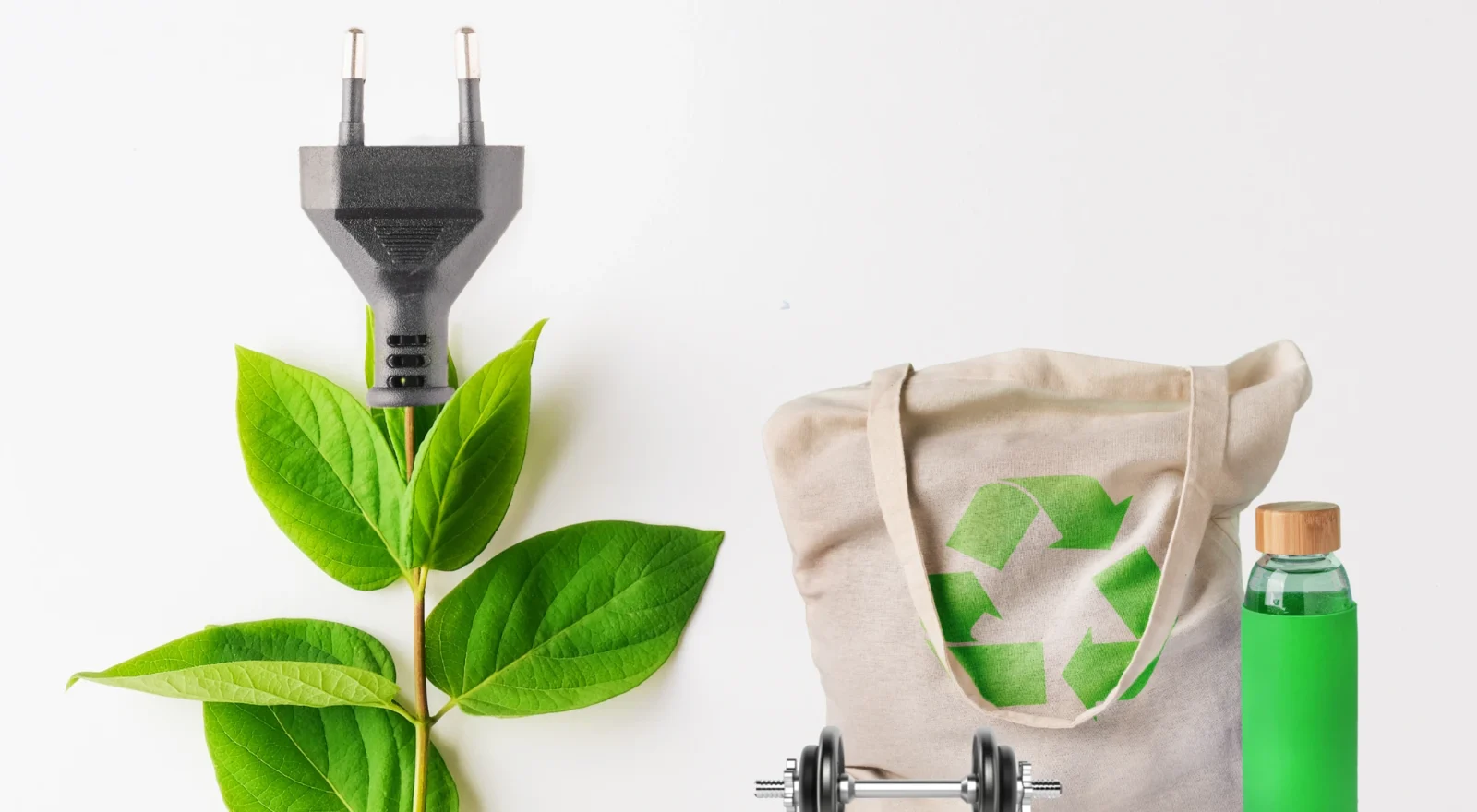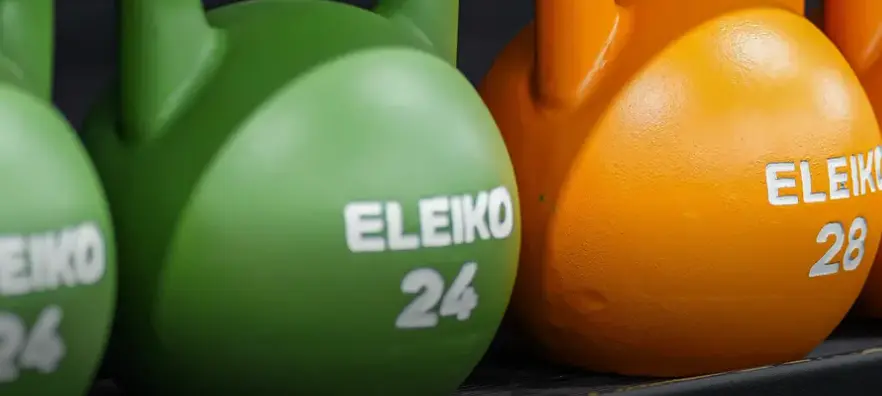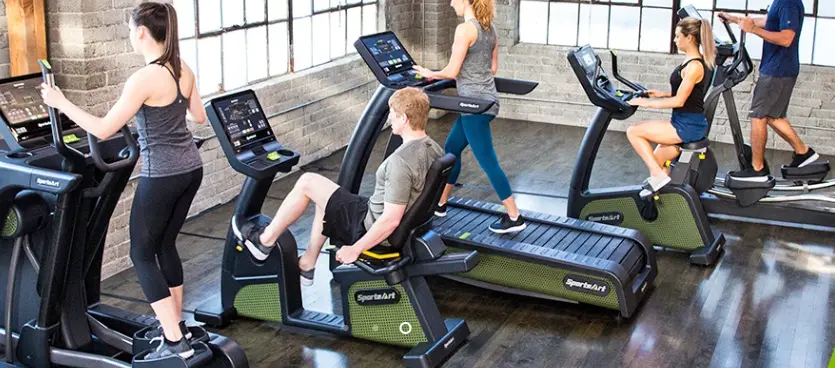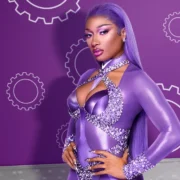Fitness Industry Takes Strides Toward Sustainability

Sustainability will be key for the fitness industry as it continues to pick up steam in the coming years
As we look ahead at gyms of the future, one thing is clear: sustainability will play a central role in shaping fitness facilities and the equipment within them. As the fitness industry tries to meet the growing demands of health-conscious consumers, it is also being called on to address the environmental impacts of its operations.
The gym of the future will not only prioritize personal well-being but will also take meaningful steps to ensure the well-being of the planet. By integrating eco-friendly technologies and practices, many fitness brands are paving the way for a more sustainable future — one where innovation meets responsibility.
As the world grapples with the urgent challenge of climate change, the fitness industry is beginning to acknowledge its role in this global issue. Given that health and wellness are at the core of the fitness industry’s mission, it seems only natural for the industry to extend its focus to the health of the planet as well. But beyond this alignment of values, what specific actions are being taken by fitness brands to address climate change? How are they contributing to environmental sustainability while promoting personal well-being?
The Time is Now
As more fitness brands recognize the need for environmental responsibility, leaders within the industry are emphasizing the importance of aligning their business practices with eco-conscious values.
Simone Rishede, Eleiko’s Head of Sustainability, stresses the importance of this shift saying, “It’s essential that sustainability becomes a core focus in the fitness industry, as a healthy planet supports healthy people, and vice versa.”
Precor shares a similar perspective. “The fitness industry has a responsibility to contribute to a greener future, and we’re committed to making meaningful changes in our products and processes,” said Dave Mendenall, SVP of operations and supply chain.
Ruben Mejia, Executive VP of SportsArt America, echoes these sentiments but emphasizes the need for immediate action.
“Aligning any industry with sustainability is crucial for the protection of our planet — not just for us today, but for future generations,” he says. “I’ll be the first to admit that our industry hasn’t done enough yet, but we need to start now.”
How exactly then are the three companies approaching it?

Green Solutions for a Healthier Planet
A priority focus for Eleiko is its products.
“We have a dedicated Head of Sustainability who collaborates closely with our management team and all departments,” said Rishede. “Our primary focus is on our products, as this is where we have the greatest potential to drive meaningful change. A product’s environmental impact is largely determined during the design phase, making our product strategy and development critical to our sustainability efforts.”
Having achieved a 94% landfill diversion rate by reducing packaging by 50% and transitioning to recyclable materials, Precor approaches sustainability holistically.
“By designing durable, long-lasting products, we minimize waste and reduce the need for frequent replacements,” said Mendenall “Sustainability is embedded in every stage of our process — from manufacturing to the final product.”
SportsArt not only focuses on producing eco-friendly equipment but has also integrated sustainability into the core of its infrastructure.
“At SportsArt, sustainability has been part of our founder’s values long before it became mainstream, says Mejia. “When our factory was built in 2000, he had a 7500 metric ton rainwater storage built under the factory. And, among other things, our solar panels provide half of the electricity that our 500,000 sq. foot factory uses in a year.”
When it comes to creating innovative and eco-conscious fitness equipment, SportsArt continues to push the boundaries of sustainability.

“We introduced our energy-generating technology, ECO-POWR™, in 2010 with an elliptical and two bikes,” said Mejia.
Since then, the company has expanded to 13 units, including the world’s first energy-generating treadmill, the G690.
“Our G660 treadmill, certified by the British Standard’s Institute, can become carbon neutral in under five years in a commercial gym and even carbon negative for the rest of its life,” Mejia explains.
Their ECO-POWR™ lineup now features a variety of equipment, including front-drive and rear-drive ellipticals, a stepper machine, two non-motorized treadmills, recumbent and upright bikes, an indoor cycle, and a rower.
Eleiko focuses on product life to avoid landfills.
“We make products that last a lifetime,” Rishede explains. “A great example is our Prestera system, a modular design that allows facilities to evolve over time without the need for full replacements. By creating adaptable systems like this, we reduce the number of products needed and minimize resource consumption, while maintaining a timeless design that prevents unnecessary replacements driven by trends.”
Precor measures its actions through EcoVadis, a global organization that provides sustainability ratings and assessments for companies.
Says Mendenall, “We’re proud to have earned EcoVadis accreditation, which recognizes our performance in key areas like environmental impact, labor practices, ethics, and sustainable procurement. This achievement reinforces our commitment to continuous improvement, as we work to reduce our carbon footprint, explore renewable energy, and enhance our EcoVadis score — all while maintaining our high standards of quality and innovation.”
Customer Expectations Drive Sustainability
Beyond staying true to their core values, these companies recognize that growing customer expectations are pushing them as well.
“Today’s younger generation cares deeply about protecting our environment,” says Mejia. “They are changing the landscape by openly telling the world that they are only going to spend their money with brands they align with. If fitness brands want to be relevant they need to start caring about sustainability.”
“Customers are increasingly focused on energy efficiency and cost savings,” said Mendenall.
We’ve seen a growing demand from customers for high-quality products and transparency about environmental and social impacts,” adds Rishede.
When envisioning the gym of the future, these industry leaders share their thoughts on how the fitness industry can make a meaningful shift toward eco-friendliness.
“Manufacturers need to focus on circular products — equipment that can be repaired, refurbished, and upgraded to extend lifecycles and reduce waste,” said Mendenall “While we’ve already integrated energy-saving technologies, the future lies in creating equipment that consumes even less electricity.”
This focus on longevity and durability is echoed by Rishede.
“By designing durable equipment that can be passed down, we can build sustainable gyms that serve both people and the environment,” she explains.
Mejia highlights the importance of taking immediate action, starting with small, practical steps.
“In the next 5-10 years, I hope that gyms take more steps to incorporate sustainability into their operations,” he says. “Gyms can switch to eco-friendly cleaning products and enable sleep modes on cardio machines. Investing in solar panels or geothermal wells can significantly reduce energy consumption. And above all, gyms need to communicate their sustainability efforts to members, ensuring their actions aren’t overlooked.”
This article original appeared in ATN’s Gym of the Future Report, which explores the technology, equipment and sustainable practices driving a new era of personalized wellness experiences. Download the free report.



